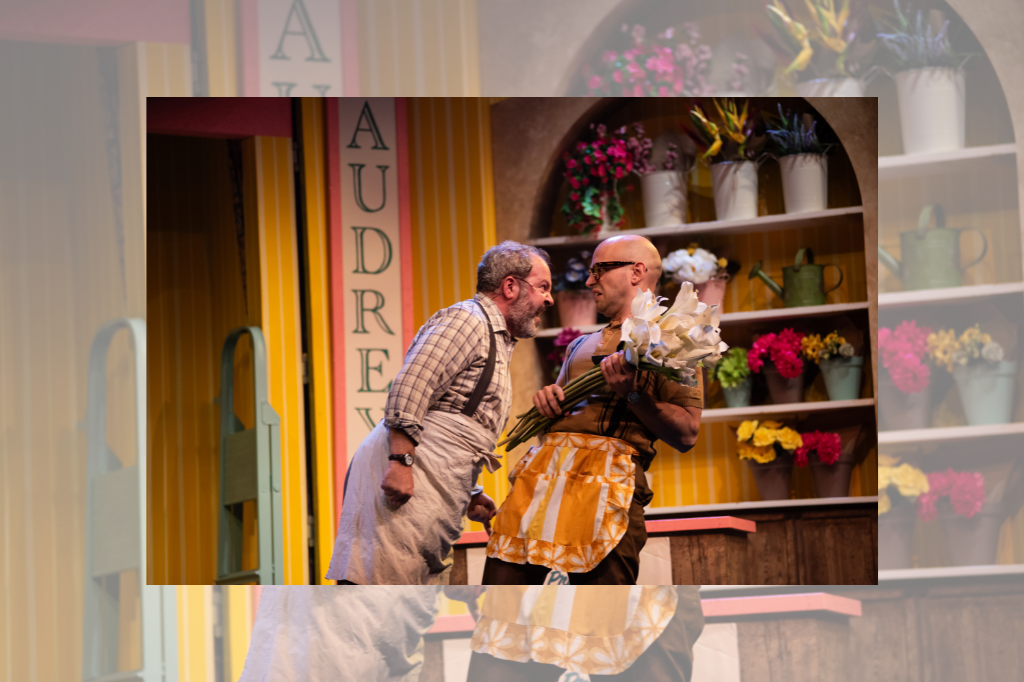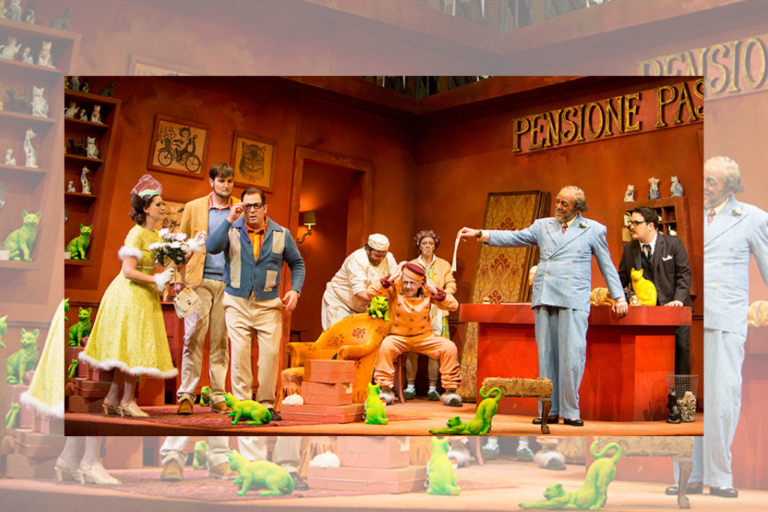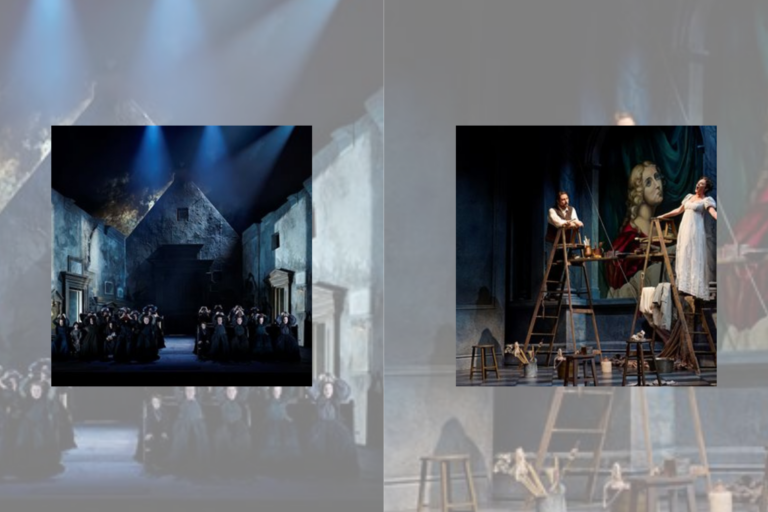REVIEW: Little Shop of Horrors at Capitol Theatre Port Hope
The performances in Little Shop of Horrors at the Cameco Capitol Theatre in Port Hope are proof that there is formidable talent in theatres out of town that aren’t part of the Stratford and Shaw festivals. The campy, zany, and just plain weird cult-classic is an entertaining musical that highlights the talents of scores of theatre artists outside of Toronto and those aforementioned festivals.
Little Shop tells the story of Seymor, a meek, awkward botanist who makes a Faustian bargain with a blood-drinking (and eventually man-eating) evil plant he purchases on the day of a solar eclipse. Inspired by the dreams of his beloved Audrey, his co-worker who desperately wants to crawl out of the gutter of Skid Row, Seymour publicizes the strangeness of the sentient, avocado-like Venus flytrap in order to draw customers to the flower shop where he works, owned by Mr. Mushnik, who raised Seymour with more cruelty than kindness. Seymor keeps the plant alive after naming it Audrey Two, first by feeding it his own blood, then later the men who become obstacles on his path to true love, success, and fame.
The role of Seymour provides Amir Haidar with an opportunity to show off his comic and vocal talents. Haidar embodies the archetypical dweeb — think of a cross between Milhouse and Fran Drescher — with a pitch-perfect Brooklyn Jewish accent and physicality that is masterfully contrived and executed. Alan Menken’s score and Howard Ashman’s entertaining, often comic lyrics perfectly show off Haidar’s voice.
Tahirih Vejdani, who plays Audrey, matches Haidar’s talents. Vejdani’s performance of “Somewhere That’s Green” almost brought me to tears, evoking a longing for simple pleasures and a hope for a better life.
Together, Haidar and Vejdani almost stopped the show with their duet, the iconic “Suddenly Seymour,” on opening night, abandoning themselves to the swelling emotional crest of Menken’s songwriting and matching the over-the-top, sci-fi story premise with an outpouring of adoration for each other.
Tyler Murree as Mushnik matches Haidar’s Seymour in his physical and vocal characterization of the complex shopkeeper — he also sings just as well as the featured leads — and Michael de Rose as Audrey’s sadistic dentist boyfriend and other bit parts manages to be hilariously over-the-top in this already over-the-top musical romp.
The doo-wop trio who function as a Greek Chorus and play other smaller roles throughout the show, performed by Sierra Holder, Taylor Lovelace, and Michelle Yu, are deserving members of this talented ensemble. The trio occasionally seems to struggle with Genny Sermonia’s choreography, which on opening night appeared to make the singing difficult for them at times — the aerobic exercise of doing the pony while hitting those high notes is a Herculean task. Despite that, their tight harmonies and pop riffs prove they belong on that stage.
These performances are quite literally upstaged by the four puppets that represent Audrey Two as the evil plant grows from what first appears as a potted baby cactus into a mammoth ten-foot-wide, six-foot-tall, fanged and tongued man-eating flytrap that drapes itself across the upstage wall of the set. Operated by Joel Cumber, who is also part of the ensemble, the plant is quite clumsy. Its movements aren’t always perfectly matched to Chris Tsujiuchi’s voice-over, but this imperfect puppetry just adds to the camp of the evening. I wonder if the hundred-thousand-dollar prop built for one of the more recent Broadway productions might actually diminish the cultish-ness character of the show.
Brandon Kleiman’s set consists of a rolling flat that acts as the front door of the shop and the dentist’s office’s door when Seymore visits Orin, Audrey’s abusive boyfriend, flanked by two flats that swing open to reveal Mushnik’s flower shop. At times, the set moves too slowly and interrupts the momentum of the action. Joshua Quinlin’s costumes, meanwhile, generally evoke 1950’s New York, and for the most part fit well.
Overall, the direction by Rob Kempson and choreography by Genny Sermonia allow the zany comedy to shine through. And shine it does, in its weird and quirky ways. As summer comes far too quickly to a close, a moment of silly levity is worth the drive, not to Stratford or Niagara-on-the-Lake this time, but to quaint, cute, and charming Port Hope.
Little Shop of Horrors runs at the Capitol Theatre Port Hope through September 3. Tickets are available here.
Intermission reviews are independent and unrelated to Intermission’s partnered content. Learn more about Intermission’s partnership model here.















Comments